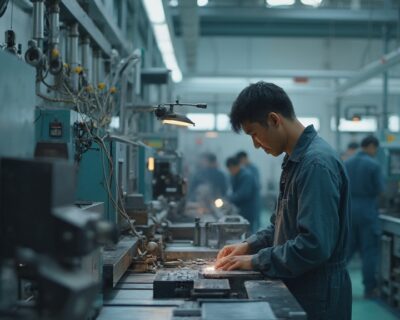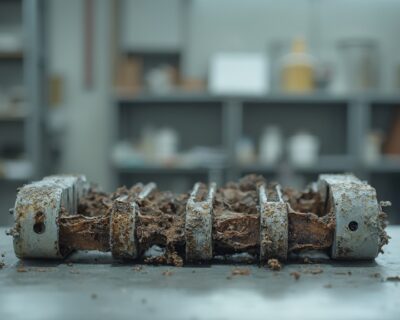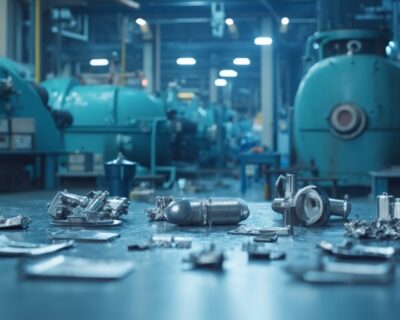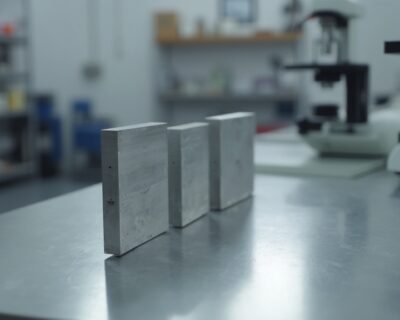Blogs
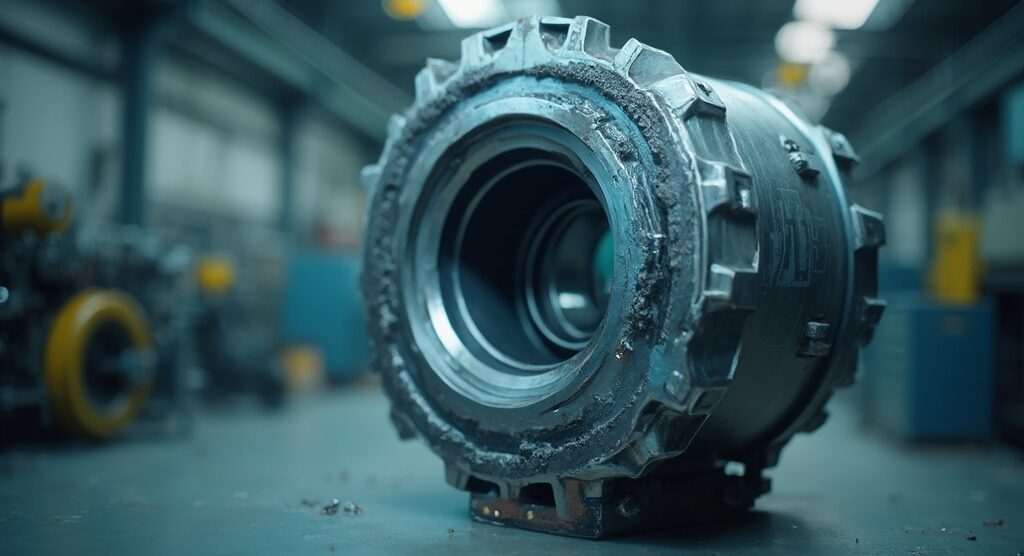
Examining the Strength of Titanium in Industrial Applications
Introduction
Titanium’s unparalleled combination of strength, lightweight, and corrosion resistance has cemented its status as an indispensable material across numerous industries. From aerospace to medical implants, its applications are both diverse and critical. This article delves into the key characteristics that make titanium a standout choice, including its exceptional strength-to-weight ratio and durability, particularly in corrosive environments.
It explores the various industrial applications, highlighting how titanium’s unique properties meet the demanding requirements of sectors like aerospace, automotive, and chemical processing. Additionally, it addresses the current challenges in the supply chain and discusses future trends, emphasizing the ongoing advancements in manufacturing technologies and alloy compositions that promise to extend titanium’s utility and efficiency even further.
Strength Characteristics of Titanium
Titanium’s remarkable strength-to-weight ratio makes it a vital material across various industrial applications. With a tensile strength reaching up to 1,400 Mpa and a density of only 4.5 g/cm³, it enables the construction of lightweight yet highly durable structures. This unique combination is especially crucial in sectors where performance and efficiency are paramount. For example, in aerospace, the utilization of this metal in components like turbofan engines not only improves durability but also enhances fuel efficiency, as highlighted by the Oliver Wyman Global Fleet and MRO Market Forecast Update 2022.
The Grade 5 metal disc, also referred to as Ti6Al4V, exemplifies the material’s superior properties. Consisting of aluminum and vanadium, this metal mixture is widely utilized because of its exceptional mechanical characteristics. Furthermore, high-strength metal forgings, created through a rigorous production method, provide outstanding durability and performance, rendering them perfect for high-stress uses.
‘Innovative lattice structure designs in a certain metal, as researched by RMIT University’s Professor Ma Qian, have shown to be 50% stronger than similar density alloys, primarily benefiting aerospace applications.’. This advancement addresses traditional manufacturing limitations by reducing stress concentrations in hollow structures, a common cause of premature failures.
As sectors face growing pressures from ecological and financial issues, the need for high-performance substances such as advanced metals is increasing. This trend underscores the metal’s critical role in modern manufacturing, where it is leveraged to overcome traditional material limitations and enhance overall efficiency.
Durability and Corrosion Resistance
Titanium stands out for its exceptional durability, primarily due to its remarkable resistance to corrosion. This resilience is attributed to the passive oxide layer that forms on its surface, which shields the metal from degradation. This property makes this metal an excellent choice for environments exposed to seawater, acids, and other corrosive substances, significantly extending the lifespan of components and reducing maintenance costs.
Specifically, the Ti-6Al-2Sn-4Zr-2Mo (Ti-6242) material is employed in high-temperature applications such as turbine engines, where its strength and durability are essential. Metal mixtures such as Grade 5 (Ti6Al4V), which integrates this metal, aluminum, and vanadium, are in high demand across multiple sectors because of their exceptional mechanical characteristics. These materials provide outstanding strength and resistance to corrosion, rendering them essential in aerospace, automotive, and medical fields.
In the medical field, this metal’s high strength-to-weight ratio and biocompatibility enhance its appeal, making it ideal for medical implants such as artificial joints and dental implants. Moreover, the advancement of new metal mixtures persists in expanding the limits, ensuring even superior strength and efficiency in extreme settings like nuclear fusion reactors and high-temperature jet engines.
Not long ago, scientists at RMIT University created a novel metamaterial from a widely used metal mixture utilizing 3D printing. This innovation showcases unprecedented strength-to-weight proportions, potentially revolutionizing the manufacturing processes of products ranging from medical implants to aerospace components. The study, released in Advanced Materials, emphasized that this material is 50% stronger than the next most durable alloy of comparable density utilized in aerospace uses. ‘Motivated by the inherent resilience observed in hollow-stemmed vegetation and corals, this innovation may result in substantial progress in the material’s applications.’.

Industrial Applications
Titanium’s exceptional properties make it indispensable across multiple industries. In aerospace, its lightweight and strong characteristics have led to its use in airframes and engine components, ensuring reduced weight and improved performance. High-strength metal forgings, recognized for their excellent mechanical properties, are especially prized in this sector, created through a rigorous manufacturing process that provides outstanding strength. The automotive sector benefits from the corrosion resistance and strength of this metal, employing it in high-performance parts such as exhaust systems and suspension components to enhance vehicle efficiency.
Chemical processing facilities depend on this metal for its unmatched ability to withstand rust and harsh substances, rendering it perfect for reactors, heat exchangers, and valves. Chemical pump bodies, constructed from premium material, are designed to manage corrosive, highly acidic, and abrasive liquids, proving essential in sectors such as pharmaceuticals, petrochemicals, and water treatment. In the medical field, the metal’s biocompatibility and corrosion resistance make it the material of choice for implants, including artificial joints and dental devices. Welding fittings made of a strong metal have become a popular choice due to the rising demand for high-performance and corrosion-resistant materials.
The military also takes advantage of the metal’s strength and durability for applications in armored vehicles, aircraft, and naval equipment. Furthermore, the sports sector utilizes a strong, lightweight metal for bicycle frames, golf clubs, and tennis rackets, improving performance. ‘The oil and gas sector capitalizes on the metal’s resistance to harsh marine environments, utilizing it in oil platforms and related equipment.’. High-quality forged metal blocks, created through a specialized forging process, are highly sought after in these sectors for their strength and durability.
However, the current geopolitical climate has disrupted the supply chain, particularly in the aerospace sector. The shortage of this metal, worsened by interruptions in Ukraine’s manufacturing, has posed a significant challenge to the MRO sector and the larger aerospace and aviation sectors. Russia, once the main provider of aerospace-grade metal, has experienced its production affected, leading to delays and resource shortages. Consequently, sectors are investigating options to address these issues, such as procuring from China, the globe’s biggest supplier of that metal. This shift, however, brings its own set of dependencies and logistical complexities. To navigate this turbulent landscape, embracing innovative technologies such as 3D printing and advanced composite materials, as well as fostering collaborative partnerships within the industry, is crucial.

Future Trends in Titanium Utilization
‘The prospects for this metal in industrial uses are remarkably promising, propelled by progress in production techniques like additive fabrication and improved alloy mixtures.’. These innovations are set to significantly enhance the performance characteristics of this metal, making it a preferred material across various sectors. For example, high-strength metal forgings, created through rigorous processes, provide unmatched strength and are perfect for high-performance uses in aerospace, automotive, medical, and military fields.
Additionally, the increasing focus on sustainability and lightweight alternatives in sectors will likely enhance the need for this metal. The material’s exceptional properties—such as high corrosion resistance, excellent strength-to-weight ratio, and biocompatibility—make it essential in uses ranging from aerospace components to medical implants. Despite a 12% global decrease in the production of this metal over the last five years, the demand remains strong due to its critical role in modern aircraft engines and other high-tech industries.
To further demonstrate, metal mixtures such as Ti-6Al-2Sn-4Zr-2Mo are utilized in elevated temperature scenarios, like turbine engine parts, because of their exceptional strength at high temperatures. This makes them suitable for parts of aircraft engines, including the fan, compressor, combustion chamber, and turbine. The aerospace sector, in particular, continues to seek this metal as a solution for reducing weight while maintaining structural integrity, even amid rising costs and supply chain pressures.
In the realm of medical applications, metal alloys are extensively studied for their potential to reduce the need for revision surgeries in hip replacements, with projections indicating a 170% rise in such procedures by 2030. ‘The ongoing research into enhancing the wear properties and long-term resilience of implants underscores its vital role in advancing medical technology.’.
As industries continue to innovate and prioritize efficiency and longevity, titanium’s unique attributes ensure its position as a cornerstone material for future developments.

Conclusion
Titanium’s unique characteristics, including its remarkable strength-to-weight ratio and exceptional durability, position it as a critical material across numerous industries. The extensive applications of titanium in aerospace, automotive, chemical processing, and medical fields illustrate its versatility and reliability. Innovations such as high-strength titanium forgings and advanced alloy compositions further enhance its performance, meeting the rigorous demands of modern manufacturing.
The corrosion resistance of titanium, bolstered by its passive oxide layer, significantly extends the lifespan of components, thereby reducing maintenance costs. As industries face increasing environmental and economic pressures, titanium’s ability to withstand harsh conditions becomes even more valuable. Furthermore, the development of new titanium alloys, including those created through 3D printing, promises to revolutionize traditional manufacturing processes, offering unprecedented strength and lightweight solutions.
However, challenges such as supply chain disruptions and geopolitical factors underscore the need for strategic sourcing and innovative solutions. The ongoing exploration of alternatives and the integration of advanced technologies will be essential in navigating these complexities. As the demand for titanium continues to rise, its role as a cornerstone material in future industrial applications remains firmly established, driven by its unmatched properties and the relentless pursuit of efficiency and performance.

